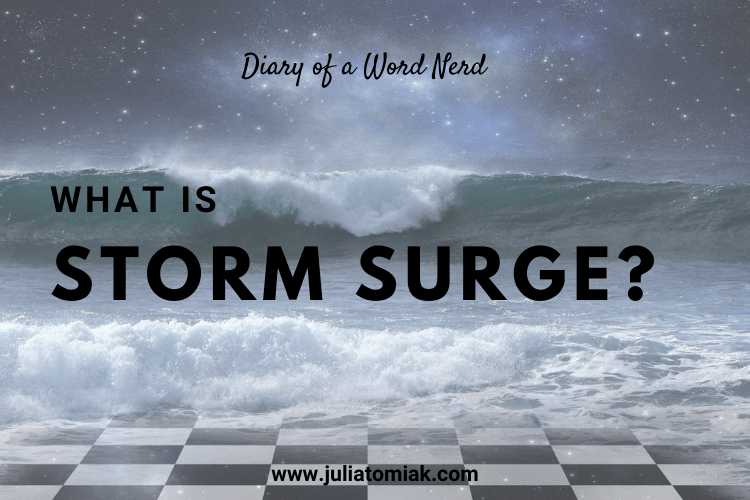On our weekly walks, my friend Leslie and I discuss everything from protests and the pandemic to the best way to keep floors clean when you have four children and several pets.
This past Wednesday we pondered Hurricane Laura. Leslie updated me on the seriousness of the storm, mentioning that weather forecasters predicted an “unsurvivable storm surge”. Which prompted each of us to wonder, what exactly is a storm surge? If you don’t know either, the Word Nerd is here to set you straight!
According to the National Oceanic and Atmospheric Administration, a storm surge is the abnormal rise in seawater level during a storm, measured as the height of the water above the normal predicted astronomical tide. CNN Meteorologist Brandon Miller offers a more visual description: “A storm surge is a rise in water level caused by a strong storm’s wind pushing water on-shore. The wind literally piles up the ocean water and pushes it on the land.” For a cool animated graphic on storm surge, check out this CNN site.
Storm surge should not be confused with storm tide, which is the total observed seawater level during a storm. Storm tide = storm surge + astronomical tide.

Many experts believe that in coastal communities, storm surge is a bigger threat than wind to individuals and their property. Usually, almost half of the deaths during hurricanes are caused by storm surge. This is because storm surge makes flooding worse. The rivers and other waterways that usually drain to larger bodies of water will flow backwards, or inland, with storm surge. And the water that comes in with the storm as rain or as storm surge has no where to go – so it stays, flooding the land and destroying whatever is in its path.
Several factors affect the size of a storm surge, including the geography of the land where a hurricane hits, the bathymetry of the area, the tide cycle, the track of the storm, and the strength, speed and size of the storm. For example, if a hurricane hits low lying land, like that in Louisiana, water from a storm surge will travel farther inland. And if a storm hits at high tide, there will be more water to push inland because the water level is already high. Bathymetry (another new Word Nerd Word!) describes the depths and shapes of underwater terrain. So, for example, in a place with a shallow continental shelf (again, Louisiana) the storm surge could be more severe than in a place with a steep continental shelf, like Miami, Florida.
Scientists also believe that climate change has contributed to the severity of storm surges. With the global rise in sea level, storm surges have gotten worse.
If you’d like to learn more about storm surge, or see more helpful graphics, visit these sites:
Are there any other storm/ ocean / meteorology terms you’d like to learn more about? Got something interesting about storms to share? Please add to the comments!
Thanks for getting nerdy with me!



